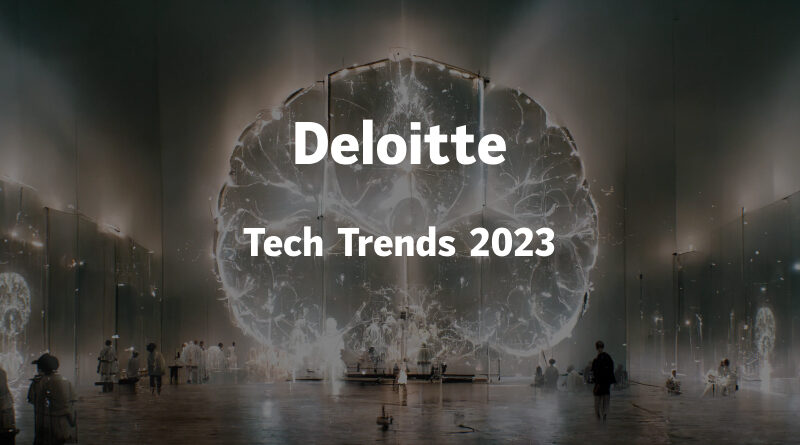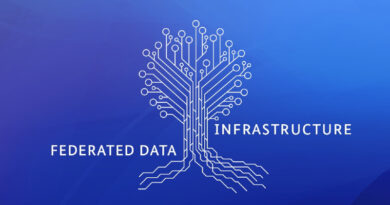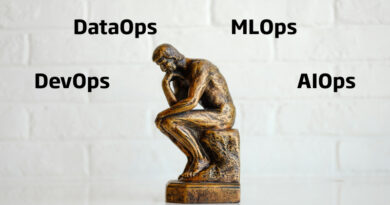Six technological trends for this 2023 according to Deloitte
Deloitte is another of those large consultancies that every year produces a report on what it believes will be the technological trends for the new year. For the fourteenth year in a row, it presents a detailed report exploring the impact of emerging technologies on innovations and key business areas.
The report is made up of six trends:
- Through the glass: immersive Internet for the company.
- Openness to artificial intelligence: learning to trust our artificial intelligence colleagues.
- Above the clouds: taming multicloud chaos.
- Flexibility, the best skill: reimagining the tech workforce.
- In us we trust: decentralized architectures and ecosystems.
- Plug and expand: Mainframe modernization is advancing in leaps and bounds.
We are going to analyze them next, to see what they are about.
Trend 1.- Immersive Internet for the company

Technologies such as virtual reality and augmented reality are transforming the metaverse, from being an initially highly specialized technology, to becoming an enterprise tool, paving the way for new business models.
With advances in computing and communication networks, users have constantly alternated between their devices and physical reality. Now, as experts recognize that screens can’t keep shrinking forever, the paradigm is shifting back toward interfaces that take us through the glass and into immersive virtual experiences, including the digital world known as the metaverse.
The proliferation of affordable augmented and virtual reality (AR/VR) technology, and the cultural shift brought about by the COVID-19 pandemic, have led to the acceptance and importance of digital worlds as feasible places for human connection.
From an economic standpoint, companies have also doubled in virtual worlds, with tens of billions in venture capital investment in the past year, and with a market estimate of $800 billion by 2024, according to analysts.
In the next couple of years, virtual interfaces are likely to move from being toys to tools, as companies build business models around the capabilities that «unlimited reality». provides. Companies that are innovative are likely to cut costs, increase customer engagement, and pioneer entirely new offerings for a fledgling market share. Investing in technologies like Edge and AR/VR headsets can both become interesting bets, so strategic and intentional adoption will be critical.
More information: Through the glass: Immersive internet for the enterprise
Trend 2.- Learning to trust our AI colleagues

Although the value of AI is undoubted, the question now is how to best use it, and that often comes down to how much workers and end users trust AI tools.
Nowadays, most organizations say they are data driven. Many even call themselves AI-powered companies. However, according to Deloitte, there is plenty of evidence to suggest that companies that use AI pervasively across all their operations, perform at a higher level than those that do not: companies that have an AI strategy are 1.7 times more likely to achieve their goals, than those who lack such vision.
The question suggests that, in the future, the important thing will be not who creates the best algorithm, but who uses it most effectively. As these algorithms take on more complex tasks, such as object detection, speech recognition, or image and text generation, the applications of these artificial intelligences will depend on how much they are understood and how much they agree with their human counterparts, because it is important to note that people do not accept well what they do not understand.
The development of processes that take advantage of artificial intelligence in a transparent and explainable way, will be key to stimulate adoption by users and workers.
More information: Opening up to AI: Learning to trust our AI colleagues
Trend 3.- Taming multicloud chaos

To simplify multi-cloud management, enterprises are turning to a layer of abstraction and automation that offers a single dashboard from which to manage them all.
Enterprise adoption of multi-cloud strategies, using a mix of cloud providers and cloud environments, continues to grow. Still, while a multicloud strategy can, at least in theory, provide specialized capabilities and optimized pricing, applications and workloads can be difficult to design and operate due to the complexity of working with a heterogeneous mix of proprietary platforms, services, and interfaces.
This means that many companies struggle to get the full benefits of their cloud investments, which, when done right, can include on-demand self-service, broad network access, fast resilience, resource pooling, and metered service. To simplify this cloud management, some companies are turning to a layer of abstraction and automation that sits on top of the burgeoning multicloud, which is known as metacloud, supercloud, or sky computing.
The metacloud concept of putting a compatibility layer on top of multiple clouds, is gaining momentum, although it still carries some important caveats that enterprises should be aware of. Multicloud is a tangled web, so very tangled, so simplicity as a service will be critical
Más información: Above the clouds: Taming multicloud chaos
Trend 4.- Reimagining the tech workforce

Organizations have been competing for a limited supply of tech talent. Instead, a long-term winning strategy creates and breeds new talent.
In the past year, workers with technical skills have been in high demand, and their shortage is unprecedented. So much is this so, that it is estimated that half of IT companies cannot fill a vacant position. In the press and the Internet, there is an abundance of news regarding the so-called Great Resignation, and companies are in the midst of a battle to search for technological talent. However, technologies become obsolete as such every 2.5 years on average, so hiring to fill a current need does not seem like a winning strategy in the long term.
Instead of competing for scarce tech talent, leaders should consider a strategy of abundance, in which tech talent can be selected, created, and nurtured. In other words, don’t compete for something when you can create it.
In the next 18 to 24 months (counting of course from January), technology leaders will be able to reinvent the workforce to focus on the skills – both human and technical – to deliver IT products and services. Leading companies will get creative and tap into new sources to find talent, while providing a compelling talent experience to retain the experts they already have. To win the battle for talent in the long term, and to prepare for future changes, organizations must be ready to avoid IT orthodoxies and reward flexibility as the best skill.
More information: Flexibility, the best ability: Reimagining the tech workforce
Trend 5.- Decentralized architectures and ecosystems

In an environment of increasing mistrust where no one trusts anything, technologies like Blockchain and Web3 could power «trustless» systems that decentralize data to rebuild user trust.
As organizations begin to understand the usefulness of the Blockchain, they are realizing that building stakeholder trust could be one of its main benefits. In fact, Blockchain-enabled «trustless» systems—so called because trust is not placed in a single person or organization, but rather in the community of users—could be an antidote to loss of faith in government, media, money, companies and other civil and private institutions.
From cybercrime to data misuse, digital trust issues undermine trust in traditional institutions and the technology that powers them. With digital ledger technologies and decentralized business models that achieve consensus through code, cryptography, and technological protocols, decentralized architectures eliminate middlemen, thereby increasing trust and distributing it among network participants.
As decentralized platforms and protocols mature, many organizations are beginning to invest responsibly and explore at their own pace. From everyday business applications to Blockchain-native business models, these organizations are proving that none of us, on our own, is as trustworthy as all of us.
More information: In us we trust: Decentralized architectures and ecosystems
Trend 6.- Mainframe modernization is advancing by leaps and bounds
Rather than completely replace mainframe systems, companies have begun looking for ways to extend the functionality of mainframe systems by linking them with emerging technologies.

The old trusted mainframe may seem synonymous with a bygone computing age. Abandoned by cloud computing and cut off from next-generation capabilities, like artificial intelligence and business processes as a service, it looks set to become IT history.
However, the reality is quite different and people continue to use mainframes. No matter how attractive cloud platforms are, a mainframe still offers a compelling value proposition for businesses. They often host applications that cannot be migrated to the cloud because it would be too expensive to do so, or too risky due to the possibility of breaking system dependencies.
The trick is to make the mainframe communicate with modern applications, and this is what leading companies are getting creative to achieve: Instead of ripping and replacing legacy core systems, companies are increasingly looking to link them with emerging technologies using innovative new connectors so that each family of systems can do what it does best.
Traditional efforts to link mainframes with modern applications have focused on APIs, which can work just fine but have some limitations. Applications must have pre-built connectors, or engineers must build these connectors, which is not always practical for every piece of software. API creation and implementation can be a complex and time-consuming process.
More information: Connect and extend: Mainframe modernization hits its stride
As we can see, Deloitte points to some very interesting theoretical trends, compared to other groups like Gartner that focus more on emerging technologies.
What do you think about it? Do you think they are on the right track, or is it more «I want this» than anything else? We will read you in the comments.
Source: Deloitte Insights – Tech Trends 2023
Header image: Deloitte.





